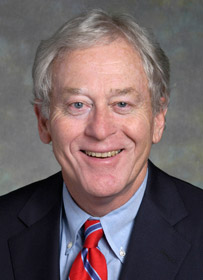IGCC, and Excelsior Energy’s Mesaba Project
September 6th, 2010
A couple of days ago, a little birdie sent me an uplifting article, and what I like most about it is the use of the term “boondoggle,” which is the definition of Minnesota’s “own” Mesaba Project:
If IEEE’s Spectrum is using that term, the rest of the world can’t be far behind!
We’ve been having quite a few go-rounds about Mesaba lately, since Iron Range Resources unilaterally decided to significantly and substantively alter the “contract” for the $9.5 million in funding. I’d started a post on that and can’t find it for the life of me, so here we go… Now remember, this is not including the state’s Renewable Development Fund money or the DOE’s money thrown at this project, this is “only” the state IRR’s money, $9.5 million, and the interest on that “loan” is 20%:
MCGP Exhibit 5023 – IRR & Excelsior Convertible Debenture Agreement
You’ll find that interest rate on p. 12, 20% simple interest per annum on the outstanding principal. Since they’ve paid nothing on it except the $40k that they were found to have spent improperly (with many other issues not addressed because the IRR had “destroyed” documentation… yeah, right…), 20% simple interest per annum on a “loan” from 2004 means that there’s another $8,000,000 due now. And this does NOT take into account the initial $1.5 million from IRR, it’s just the agreement above.
And as noted above, a couple of weeks ago, it seems the IRR unilaterally decided to significantly and substantively alter the “contract” … based on exactly what???
Here’s how Commissioner Sandy Layman characterized the predicament:
The principal balance owed by Excelsior Energy, Inc. to Iron Range Resources under the
existing loan documents is $9,454,962.
No mention is made of the more than $10 million in interest. Nada…
Here are two of Aaron Brown’s posts:
Excelsior Energy to seek huge break from Iron Range Resources
… and …
This Iron Range blogger is done apologizing for Iron Range cronyism
Here’s Charlotte Neigh’s editorial, published in the Grand Rapids Herald-Review and on the Citizens Against the Mesaba Project site:
IRR WRITES OFF $ MILLIONS OWED BY EXCELSIOR ENERGY
Excelsior Energy stalling payment to IRR… AGAIN
August 18th, 2010
.
As inevitable as the tide, the Minnesota winter snows, mosquitos, death and taxes… This is way too predictable! Charlotte Neigh, of Citizens Against the Mesaba Project, is dead on again with her trajectory of Excelsior Energy’s weaseling out of their financial responsibilities in this Mesaba Project boondoggle. A deadline is approaching where Excelsior Energy has to make a payment on its financing from the Iron Range Resources Board:
MCGP Exhibit 5023 – IRR & Excelsior Convertible Debenture Agreement
A little birdie just sent this, literally hours after Charlotte had mentioned that the next payment was coming due and wondering what they were going to pull this time to get out of it (it’s ALWAYS something):
Excelsior asks for more time to repay Iron Range loans
IGCC taking some twisted turns…
August 11th, 2010
There’s been change afoot as the facts of the infeasibility of CO2 capture and storage filters up to the higher regions of the cesspool, and as the financing nightmares and high capital costs of IGCC are paraded in public as the Indiana Duke IGCC project moves forward, and as, of course, the DOE’s EIS (here’s the DOE’s project page) for Excelsior Energy’s Mesaba Project drags on and on and on as the agency refuses, thankfully, to issue the Record of Decision on that… and slowly, painfully slowly, the truth about this IGCC pipedream is coming out.
A few telling tidbits, first, that they’ve given up on FutureGen IGCC, YEAAAAAAAAA:
DOE to provide $1B to revamped FutureGen
This study was released last June, which shows that leakage of CO2 is a major problem, and which makes sequestration not feasible:
Long-term Effectiveness and Consequences of Carbon Dioxide Sequestration – Shaffer
Can’t have information like that getting out, so USA Today, of course, plays it with the following headline — DUH, of course critics pan the study — and this is the best they could come up with and it took two months!
Critics question carbon storage study
CATF wants federal PPA?
July 12th, 2010
Oh, how bizarre can it get. Sometimes, I’m left speechless in disbelief. We all know about Clean Air Task Force’s toadying for coal, they’re the Clean Air Task FArce, but this? It’s just going too far.
CLEAN AIR TASK FORCE THINKS THE FEDS SHOULD SIGN A PPA FOR FUTUREGEN ELECTRICITY!
Really, here’s a quote from the Press Release:
And I’m sure that Tom Micheletti, of Excelsior Energy/Mesaba Project infamy, is not happy about this, not happy about it because they’re proposing the FutureGen and not Mesaba:
IGCC plants have problems getting Power Purchase Agreements because they are NOT economical, even with all the federal and state subsidies, with all the perks, with all the circumvention of regulation, as the ALJ’s noted in their Recommendation to the PUC on the Mesaba Project PPA, it’s just TOO COSTLY! And, plus, it’s NOT in the public interest!
But there goes Clean Air Task Farce saying the feds, US, we the taxpayers, should buy up the FutureGen electricity? Give me a break! Really, here it is from the horse’s mouth(the other end of the horse is further below) — this CATF press release just out:
REPORT CALLS FOR COMPREHENSIVE ARRAY OF NEW DEMONSTRATION PLANTS, $20 BILLION IN NEW FUNDING
Here’s the entire CATF report:
Contact the White House, Executive Office of the President, and tell the staff what you think of CATF’s brilliant idea and what you think of CATF’s lobbying for coal:
And this article about it:
Expert: Feds should buy FutureGen’s power output
Byron Starns on both sides of the fence
July 6th, 2010
I’ve just by utter accident discovered a few things…
We all remember Byron Starns, attorney for Excelsior Energy’s Mesaba Project, the coal gasification project from hell. Check his bio – CLICK HERE – he’s done some amazing things, that Reserve Mining case in particular.
Now let’s take a walk back on memory lane, the 2003 Prairie Island bill, where the “Environmental Coalition”, i.e., Izaak Walton League, MCEA, ME3/Fresh Energy, and Xcel and Tom Micheletti did a deal that advance wind some, let Xcel continue using Prairie Island and increased cask storage, and opened the door for Micheletti’s Excelsior Energy and their IGCC plant that they’d been promoting since the 2002 session. On one hand, the “Environmental Coalition” including MCEA, in the middle we have Xcel, and on the other we have Tom Micheletti and Excelsior Energy…
Here’s the 2003 Prairie Island bill:
Minnesota Session Laws 2003 – 1st Special Session, Chapter 11
Here’s what it did for Mesaba (as if calling burning garbage “renewable” wasn’t enough):
Excelsior Energy Mesaba Project related parts of 2003 Chapter 11
When the Power Purchase Agreements for Excelsior Energy’s Mesaba Project came up at the PUC, MCEA intervened, both as a party and representing others:
To look at the full docket, go to www.puc.state.mn.us and “Search Dockets” and search for PPA docket “05-1993” and Siting docket “06-668.”
And look who filed a Notice of Appearance for Excelsior Energy dated April 27, 2006:
And representing Excelsior Energy in the Siting Docket dated September 26, 2006:
And look who is noted in the MCEA Annual Reports as providing legal services to MCEA in 2005 and 2006, look in the fine print, why it’s Byron Starns!
Oh, but that’s not all, look who joins the Board of MCEA in 2007 … and remains through 2008… and 2009 according to his bio on the LSD site — why, it’s Byron Starns again!:
Board of Directors, Minnesota Center for Environmental Advocacy, 2007–2009 (linked)
His bio states he was on the MCEA board in 2009, but the 2009 IRS 990 does not list him as having been on it at reporting year end.
I just spoke with Byron Starns, who, with the forwarning to don his Kevlar vest, was kind enough to entertain a few questions, and said that (close to quotes but not quite):
MCEA has an ethical requirement, that everyone on the Board must make full disclosure of interests and conflicts, and that when issues do come up, anyone with a conflict has to leave the room. He said he didn’t participate in any decisions related to energy matters for MCEA. He does not recall if the fact that he was on MCEA’s board was disclosed in the Excelsior Energy Mesaba Project PPA or Siting dockets. Also, he noted he is no longer on the Board of MCEA.
I don’t recall any disclosure about this — do you?
Is it “not a conflict” because MCEA’s interests and the interests of their “clients” the Waltons and Fresh Energy are so closely aligned with those of Excelsior Energy because of that 2003 agreement?





